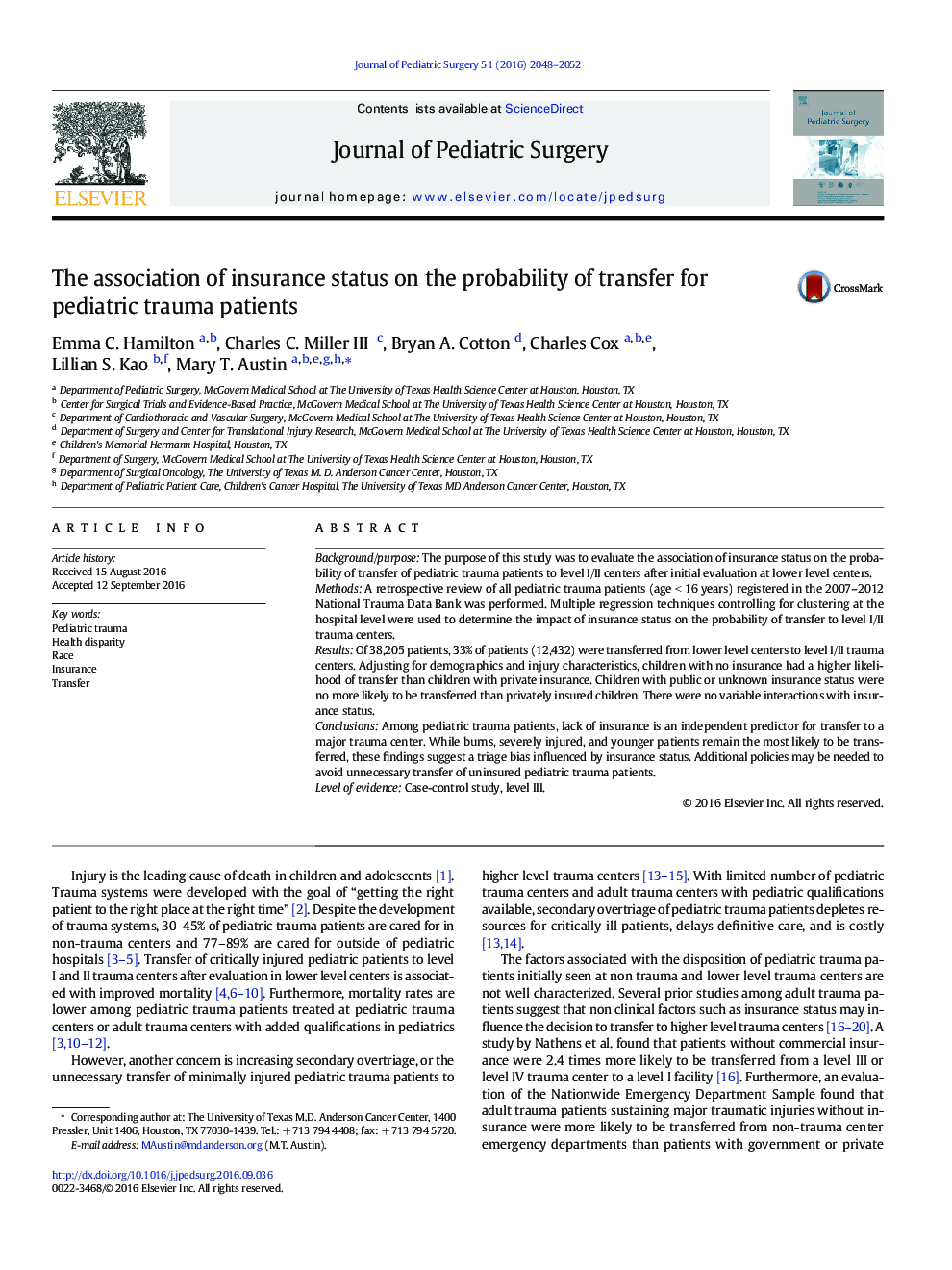| Article ID | Journal | Published Year | Pages | File Type |
|---|---|---|---|---|
| 5718339 | Journal of Pediatric Surgery | 2016 | 5 Pages |
Background/purposeThe purpose of this study was to evaluate the association of insurance status on the probability of transfer of pediatric trauma patients to level I/II centers after initial evaluation at lower level centers.MethodsA retrospective review of all pediatric trauma patients (age < 16 years) registered in the 2007-2012 National Trauma Data Bank was performed. Multiple regression techniques controlling for clustering at the hospital level were used to determine the impact of insurance status on the probability of transfer to level I/II trauma centers.ResultsOf 38,205 patients, 33% of patients (12,432) were transferred from lower level centers to level I/II trauma centers. Adjusting for demographics and injury characteristics, children with no insurance had a higher likelihood of transfer than children with private insurance. Children with public or unknown insurance status were no more likely to be transferred than privately insured children. There were no variable interactions with insurance status.ConclusionsAmong pediatric trauma patients, lack of insurance is an independent predictor for transfer to a major trauma center. While burns, severely injured, and younger patients remain the most likely to be transferred, these findings suggest a triage bias influenced by insurance status. Additional policies may be needed to avoid unnecessary transfer of uninsured pediatric trauma patients.Level of evidenceCase-control study, level III.
